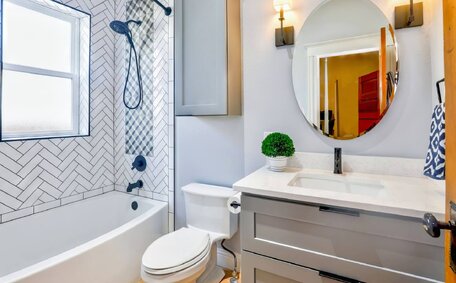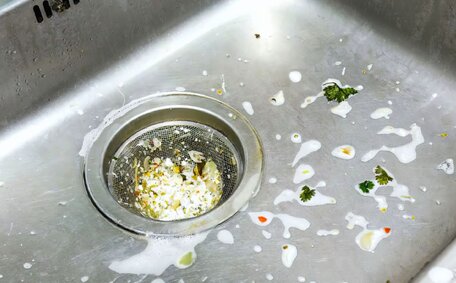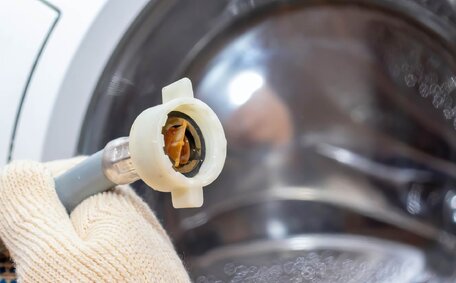Introduction to Gas Regulators and Their Purpose
A gas regulator is a crucial component in any natural gas appliance or system. It controls the pressure of gas flowing from a tank or line to ensure a steady, safe supply to your grill and appliances. Gas regulators perform two primary functions:
- Reduce high gas pressure from the source to the appliance’s required working pressure
- Maintain consistent outlet pressure for steady gas flow
Propane regulators reduce pressure from over 100 psi in propane tanks to less than 1 psi for grills and ranges. This double stage of pressure reduction prevents issues like damage, leaks or poor performance.
Gas regulators have inlet and pressure gauges to monitor pressure levels. Off-target readings may signal a malfunctioning gas regulator. Understanding regulator stages, testing pressures, and recognising failure symptoms enables efficient propane flow management and early problem detection.
While regulators are built to last five years or more, wear and tear happens. Upon detecting regulator issues, immediate professional assessment and potential replacement are essential to prevent system failures or safety hazards such as gas leaks and variable flames. This article delves into diagnosing prevalent faults in gas regulators.
Common Signs of a Faulty Gas Regulator
Several symptoms indicate a gas regulator is faulty and may require replacement:
- Uneven flame heights - Erratic burner flames may signify propane regulator issues, failing to maintain consistent pressure.
- Yellow or orange flames - A yellow flame suggests incomplete propane combustion; burners adjusted correctly produce a blue flame. Yellow or orange flames may point to excessively high upstream gas pressure.
- Whistling or hissing - Strange sounds when appliances turn on/off after first stage regulator function can signify worn seals or problems in the second stage regulator.
- Additionally, slow ignition, with longer-than-usual lighting or warming times, suggests low gas flow resulting from a faulty regulator or related gas cylinder problems.
- Pilot lights frequently blow out - Insufficient gas pressure propane will cause pilot lights to extinguish.
- Smelling gas - Perceptible propane odour likely means leaks that a faulty propane regulator can’t contain.
These warning signs underscore the importance of testing your propane regulator. Simple pressure gauge tests, often referred to as a leak test, can validate if inlet and outlet readings are abnormal. If confirmed faulty through testing, replacement of pressure regulators by a professional is highly recommended to avoid gas leak dangers or appliance damage.
Low or Weak Flame Strength
One of the most telling signs of when regulator issues begin is a low or weak flame strength consistently across appliances burning LP gas. This happens when the regulator can’t maintain the necessary outlet pressure to supply the gas flow all burners need.
You may notice the stove flames or the ones from your gas grill regulator struggling to ignite, barely reaching the burner caps, or appearing thin and wispy instead of robust and blue. Such diminished flames result in prolonged preheating times, inconsistent cooking, and repeatedly extinguished pilot lights.
Insufficient gas flow will more significantly impact high-draw appliances like ovens or water heaters. Weak flames stemming from inadequate flow can affect the performance of your regulator, preventing it from reaching appropriate temperatures for baking or heating water properly.
Low or weak flame strength across multiple appliances points to the most common factor - the bypass valve in the regulator. It likely has a stuck valve, broken spring, or worn diaphragm unable to regulate stable pressure. To restore normal flame strength, you may need to replace your faulty regulator.
Difficulty Igniting Burners
Faulty gas regulators with an impaired inlet valve that have not passed an inspect regulator checkpoint often lead to ignition issues with appliances. When a regulator fails to deliver sufficient gas flow and pressure, burners may have difficulty lighting and can go out often.
Restricted gas flow impedes the accumulation of fuel necessary for an ignition spark to catch and maintain a flame. You may hear clicking from the igniter but no flames result. Pilot lights also routinely blow out from low pressure, a common symptom when a regulator bad and unable to maintain the correct pressure.
Another common issue is damaged propane seals or debris causing air to enter gas lines, indicating the regulator needs attention to seal the airflow breach. This air dilution results in an improper air-fuel mix that won’t ignite easily. Attempting to light appliances in this state can lead to small explosions from gas buildup.
If ignition issues start occurring across all your appliances, the root cause is likely the common regulator. Substituting a defective regulator can reinstate proper ignition, so expedite replacement if necessary. Still, debris in lines may need clearing and damaged seals replaced during diagnosis.
Persistent ignition failure is a warning sign not to ignore. Appliances won’t function properly and gas buildup creates a hazardous situation. Have your regulator tested or replaced immediately by a professional if ignition problems arise.
Unusual Noises When Turning Appliances On/Off
Strange noises from your appliances when turning them on or off can indicate a deeper issue with your gas regulator. Some common sounds that may signal problems include:
- Hissing or whistling - Worn seals or loose components within the gas system may result in leaks, producing an audible hissing noise. A whistling sound usually means there’s high velocity gas escaping into the regulator, a clear compromise in the safety feature.
- Popping or banging noises often stem from loose fittings, which may trigger minor gas explosions as unburned gas ignites inside the appliances.
- Rattling sounds may be caused by debris that has become dislodged within the regulator, affecting the gas flow.
These noises signify your regulator isn’t maintaining consistent pressure or stopping leaks. Gas can escape around worn seals and ignite in appliances. An unreliable regulator also allows hazardous gas buildup or flame instability.
Strange sounds always warrant immediate professional inspection of your regulator. Repairs or replacements of loose seals, fittings and damaged internal parts may be required to stop leaks and noise.
Detecting Gas Leaks
Undetected propane gas leaks pose a serious danger, including the risk of hazardous carbon monoxide buildup in your home. Since a faulty regulator can lead to gas propane leaks, it’s critical to check for any signs of leaks whenever you suspect regulator issues.
There are a few common ways to test for leaks:
- Bubble test - Apply soapy water with a brush or spray bottle on connection points along gas lines and regulators. Bubbles indicate escaping gas - a clear sign that you’ll need to attend to the issue promptly.
- Smell test - Carefully smell near appliances, lines and fittings for the added odorant scent indicating propane leaks.
- Combustible gas detector - Use a specialty leak detector wand to electronically sniff out methane or propane.
If leak tests confirm escaping gas, immediately turn off gas supply at the main gas supply valve. Evacuate the area to avoid ignition risks until a professional can fully inspect all lines, fittings, seals and regulators for damage allowing leaks. Repairs or replacements of faulty equipment may be required before safely turning supply back on.
With regulators prone to wear over time, periodic leak checks are wise. Catching even small leaks early prevents larger appliance failures, avoids poisonous carbon monoxide accumulating, and keeps your home safe.
Conducting a Soap Test to Check for Leaks
A soap test is one of the most effective ways to check for gas leaks. Here is a step-by-step guide:
- You’ll need a spray bottle, brush, or other applicator and fill it with a 50/50 mix of dishwashing soap and water.
- Switch off all gas appliances.
- Generously apply the soapy solution to regulator connections, valves, fittings, seals, and tubing along the gas line.
- Watch closely for any bubbles forming. Bubbles indicate escaping gas which means there is a leak present.
- Mark any areas where bubbles appear so the exact leak location is clear.
- If leaks are detected, immediately turn off the main gas valve to stop the leak.
- Contact a professional gas technician to inspect all system components and make necessary repairs before turning supply back on.
Performing this simple bubble test on a regular basis allows you to check for any regulator issues or gas leaks around connections. Early leak detection is vital for preventing major repairs, gas buildup hazards, and even poisonous carbon monoxide accumulation in a home over time.
Using a Gas Detector to Find Leaks
A gas detector is an invaluable tool for identifying gas leaks. These portable electronic devices have sensors that homeowners can use to sniff out methane, propane, or other combustible gases.
To perform a pressure test with a gas detector to check for leaks, make sure to turn propane appliances off. Then turn on the detector and slowly wave the sensor probe around regulator connections, tubing, joints, and fittings along the gas line.
The detector will alert with an alarm at the detection of leaking gas. The volume and frequency of beeps indicates if there is too much gas escaping.
Immediately shut off the gas supply for all detected leaks. Mark the exact leak location and contact a professional to make repairs. They’ll determine if the faulty regulator, seals, or other damaged parts need replacement.
For home safety, owning an UL-approved gas detector to periodically inspect your appliance regulators for leaks is recommended for all propane system owners. Catching minor leaks early prevents major hazards from fuel buildup and carbon monoxide poisoning.
When to Call a Professional Plumber
It’s crucial to call a professional plumber in situations beyond your skills or when safety is a concern, including detecting gas leaks, combustion issues, or appliance damage. Our team at Burwood Plumbing is always available for emergency repairs, troubleshooting difficult problems, and conducting necessary gas system replacements.
We have the expertise to fully diagnose issues and install upgraded, safe equipment.
Our number is 1300 349 338.
Major symptoms like the inability to ignite appliances, uncontained gas smell, or abnormally high gauge pressures require a pro. Not addressing these expeditiously can endanger occupants and property. Our techs rapidly respond 24/7 to make needed fixes.
For minor issues such as difficulty igniting or uneven flames, we provide over-the-phone guidance on safe troubleshooting steps. Nevertheless, book a service call without delay should the problems continue or if you lack the expertise and tools to address them.
How Plumbers Diagnose and Repair Faulty Regulators
Qualified plumbers possess the required expertise, equipment, and safety proficiency to accurately diagnose and rectify issues with your gas regulator.
To diagnose problems, plumbers will:
- Conduct thorough visual inspections of the regulator and gas lines for any visible damage
- Use manometers to test inlet pressure and outlet pressures and compare to standard benchmarks
- Perform leak tests by spraying soapy solution on seals, valves and connections
- Analyse issues by lighting appliances to check flame appearance and ignition performance
If tests conclusively show the pressure regulator is faulty, the plumber will replace it with an identical or upgraded model as necessary. They will ensure the replacement unit sustains the proper outlet pressure to deliver a safe, efficient, and consistent gas flow.
After installing a new regulator, plumbers re-check for leaks, re-light appliances to verify normal flame strength and ignition, and confirm inlet and outlet pressures are in acceptable ranges. They may also purge remaining air from lines before declaring the system safe to operate again.
Our team follows stringent safety protocols throughout the process. We shut off main gas valves during repairs and use pipe sealant rated for gas systems when re-connecting regulator lines. Hiring a qualified plumbing professional ensures your regulator problems get diagnosed and fixed properly without compromising safety.
Resetting vs. Replacing Your Gas Regulator
In some cases, resetting your faulty gas regulator may restore functionality. To reset, turn off the propane tank valve and disconnect the regulator. Relight appliances to check if flame strength and ignition improve.
To bleed excess pressure, first loosen and then securely retighten the fittings. Gradually reopen the gas supply to regulate the flow and reset the regulator stages.
Our technicians at Burwood Plumbing understand when you need regulator replacements and handle them professionally.
We install new code-compliant models and verify their safety through pressure tests and leak checks.
Resetting regulators with minor faults can temporarily resolve problems but doesn’t fix underlying wear. Consult our team if you’re unsure whether resetting or replacement is right for your situation.
Safety Tips for Maintaining Your Gas Appliances
Appropriate maintenance of your gas appliances is vital for ensuring optimal performance and safety. Adhere to the manufacturer’s guidelines for care and cleaning to maintain appliance efficiency. Visually inspect burners on your grill, pipes and seals regularly for any signs of wear, corrosion or leaks.
Also, schedule annual servicing by licenced technicians like our team at Burwood Plumbing. We thoroughly examine every appliance component and use advanced diagnostics to validate safety and functionality. Our tune-ups adjust and lubricate parts for optimal operation while identifying looming failures before they become dangerous or costly.
Install carbon monoxide and gas detectors as an extra safeguard. These will alert occupants if any leaks or combustion issues arise between inspections and servicing. Practising diligent preventative maintenance and utilising safety monitoring gives homeowners peace of mind while maximising appliance longevity.






